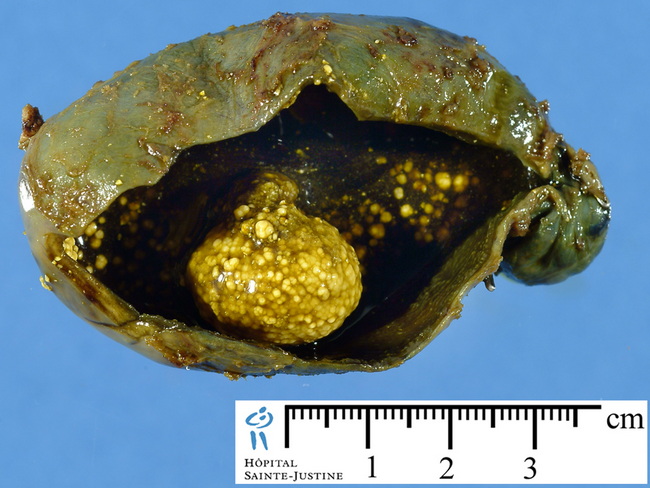Cholesterol Gallstones : Pathophysiology


Comments:
Pathophysiology of Cholesterol Gallstones: Bile is composed of bile salts (67% by weight), phospholipids (22%) and cholesterol (4%). Cholesterol stays soluble in bile by forming micelles with bile salts and lecithin (phosphatidylcholine). When cholesterol concentration is greater than the solubilizing capacity of bile (supersaturated bile), cholesterol monohydrate crystals appear which eventually lead to the formation of macroscopic stones. Supersaturation can occur due to hypersecretion of cholesterol, hyposecretion of bile acids or phospholipids, or a combination of these mechanisms. The most common cause of cholesterol stone formation is increase in biliary cholesterol due to increased synthesis or increased uptake from the gut.In females, estrogen exposure (through pregnancy, estrogen replacement therapy, or oral contraceptives) increases hepatic expression of lipoprotein receptors and enhances HMG-CoA reductase activity. This increases cholesterol uptake and biosynthesis respectively. (continued in the next image). The image shows cholesterol gallstones. Courtesy of: Dr. Jean-Christophe Fournet, Paris, France; humpath.com; used with permission.



